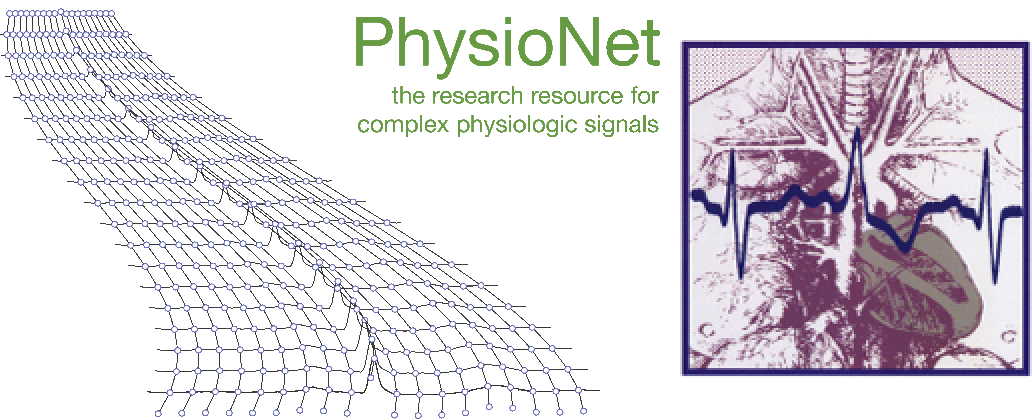- Registration form
- Example MATLAB and Python submissions and scoring code
- Submission instructions and form
- Leaderboard, results, and papers
- Public discussion forum
- Rules and deadlines
- Current and general FAQs
- About
Sandbox Evaluation of Entries in PhysioNet/Computing in Cardiology Challenges
This page describes how entries in PhysioNet/CinC Challenges are evaluated and scored automatically. The method described below was developed to support the 2014 Challenge. Entries for future challenges, and unofficial late entries for previous challenges, will also be evaluated and scored using this method.
This page also includes instructions for setting up a replica of the Challenge test environment, which may be useful for debugging Challenge entries.
Evaluation details
All of the processing needed to check, evaluate, and score challenge entries is performed on dedicated 64-bit Linux servers, under control of the supervisor script (evaluate). Each server runs several virtual machines (VMs) using qemu and kvm hardware virtualization.
Newly uploaded entries are initially placed into a queue. The oldest entry in the queue is loaded into an idle VM as soon as one is available, and stage 1 processing begins.
During stage 1 (managed for the 2014 Challenge by prep), the entry is checked to be certain that it contains all of the components required by the rules of the challenge; if so, its setup.sh script is run. The evaluation ends if stage 1 does not succeed for any of these reasons:
- the entry is unreadable or incomplete
setup.shdoes not exit within five minutessetup.shfails (exits with non-zero status)
If stage 1 ends early, the diagnostic output of setup.sh (its standard
output and standard error output) is reported in the last case, or an
appropriate error message is reported otherwise. If setup.sh exits
successfully (with zero status), the entry is queued for stage 2
processing.
During stage 2 (managed for the 2014 Challenge by quiz),
the training data set is copied into the VM. The entry’s next.sh script
is run once with each training record as input. The evaluation ends if
stage 2 does not succeed for any of these reasons:
next.shfails on any recordnext.shdoes not exit within 20 secondsnext.sh’s results (in the 2014 Challenge, its annotations) do not match the expected results submitted with the entry
If stage 2 ends early, the diagnostic output of next.sh (its standard
output and standard error output) is reported in the first case, or an
appropriate error message is reported otherwise. If all of the training
set records are processed successfully, and all results match the
expected results, and the entry does not include a DRYRUN file (which
forces a premature exit after completion of stage 2), the entry is
queued for stage 3 processing.
During stage 3 (managed for the 2014 Challenge by exam),
the test data set is copied into the VM. The entry’s next.sh script is
run once with each test record as input. Unlike stage 2, however, errors
do not cause premature termination of stage 3, and next.sh’s diagnostic
output is not reported (to prevent leakage of information about the test
data). The numbers of failures and timeouts, if any, are reported in
lieu of detailed diagnostics. The results are collected and transmitted
from the VM to the dedicated host for stage 4 processing. (The only
exception occurs if stage 3 is not complete after 1 hour; in this case,
a timeout error is reported, and the evaluation ends at the beginning of
stage 4.)
In stage 4 (managed for the 2014 Challenge by score), the collected results are compared with the Challenge’s reference results to determine performance statistics and scores, which are reported to the user.
Replicating the Challenge test environment
In order to test your entry, it is not necessary to replicate the Challenge test hardware, but it may be helpful to compare it with your hardware to estimate your entry’s run time. The dedicated Challenge servers have four quad-core 2.6 GHz AMD Opteron 6212 CPUs and 32 GB of RAM. The VMs are configured with dual-core amd64 CPUs, 2 GB of RAM, a 10 GB read-only root partition, a 1 GB read-write home partition, a CD-ROM drive (for loading the entry into the home partition in stage 1, the training data in stage 2, and the test data in stage 3), and a serial port (for transferring status reports to the host in stages 1 and 2, and analysis results in stage 3). The VMs are not configured with network interfaces.
To replicate the Challenge test software environment available within the VMs, install amd64 Debian 7 (Wheezy) and apply all updates, then install these additional packages from the Debian stable repository:
automake build-essential gfortran ghc libarmadillo-dev libboost-all-dev
libgsl0-dev octave openjdk-7-jdk python-numpy r-base sharutils
liboctave-dev gsl-bin octave-statistics
octave-control octave-general octave-image octave-miscellaneous
octave-optim octave-signal octave-specfun octave-struct
(See a complete list of installed Debian packages as of Tuesday, 26 April 2016 at 18:11 EDT.)
Finally, install the WFDB Software Package. (Installation will be much more convenient if a network interface is available; remember, however, that your entry will not be able to use a network interface during evaluation.)
For convenience, you may download a bootable ISO image (847 MB) containing the test environment. The image also includes the training data set for the 2014 Challenge. Copy it to a CD or USB memory stick, then boot it on any computer containing a 64-bit AMD or Intel x86-compatible CPU, or install it within a virtual machine. Details are here; sources and previous versions of the image are here.
You may install and use the test software environment on a spare computer if you wish, or in a VM using whatever VM technology you prefer on your favorite host OS. On the Challenge servers, we use qemu-kvm, hosted on Fedora GNU/Linux.
Supported by the National Institute of Biomedical Imaging and Bioengineering (NIBIB) under NIH grant number R01EB030362.
© PhysioNet Challenges. Website content licensed under the Creative Commons Attribution 4.0 International Public License.
